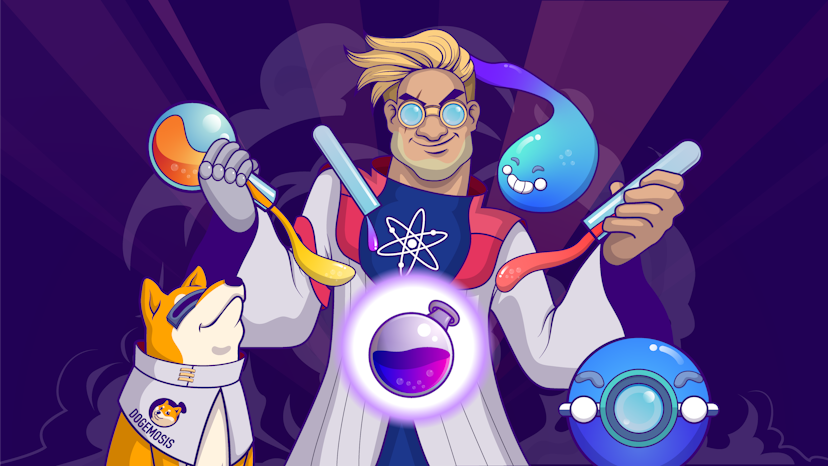Osmosis Lights Up the Market with 80% Run in Last 14 Days
Osmosis, a DEX that's part of the Cosmos ecosystem, is hitting all-time highs.
By: Owen Fernau • Loading...
DeFi
Osmosis, a decentralized exchange, has made its way to the front page of CoinGecko as its token has repeatedly rallied in the new year.
Osmosis’ OSMO token sits at an all-time high of $8.56 in mid-morning trading U.K. time. OSMO’s market cap is $2.3B, after the token appreciated about 80% in the past 14 days, according to CoinGecko. The price action makes OSMO the 73rd most valuable digital asset in the world.
Osmos’s 14-day sprint. Source: CoinGecko
Price isn’t the only factor looking up for the decentralized exchange (DEX) — Osmosis notched an all-time high of $112M in volume on Jan. 4, according to a dashboard provided by the project.
That’s enough to push Osmosis’ daily volume above that of Curve Finance, a DEX and DeFi’s largest project in terms of total value locked (TVL).
Osmosis co-founder Sunny Aggarwal told The Defiant that he sees the DEX’s recent success as partially a product of general excitement around the Cosmos ecosystem, of which Osmosis is a part.
Cosmos is a network of independent blockchains and its token ATOM, has rocketed 74% in the last 14 days.
Aggarwal says that Osmosis is currently one of the biggest apps in the Cosmos ecosystem. Indeed, Map of Zones, which tracks different Cosmos projects, each of which is its own blockchain, shows Osmosis as the leader in terms of Inter-Blockchain Communication (IBC) protocol transfers.
A IBC transfer happens when a user moves an asset from one Cosmos chain to another. This is done by effectively locking an asset on one chain and minting a mirrored version of it on another IBC-enabled chain.
Map of Zones shows Osmosis with 1.39M IBC transfers in the last 30 days, while the number two ranking project, the Cosmos chain itself, has under 486,000 over that same time period.
Bonding Curve
Like Curve, Uniswap and others, Osmosis uses an automated market maker (AMM) model, which means users provide the liquidity necessary for trading. As people trade, the amount of assets in a given pool, say ETH and DAI, adjust, according to a formula called a bonding curve.
According to its docs, Osmosis aims to differentiate itself from other AMMs by offering customizable bonding curves suitable for different situations.
Uniswap’s V2 uses a legendarily simple bonding curve, but Curve for example, employs a different one designed to take advantage of its homogenous asset pools like DAI-USDT-USDC, all of which are pegged to the US dollar.
Bonding curves from the StableSwap paper, written by Curve CEO Michael Egorov.
In addition to custom bonding curves, Osmosis’ generally exhibits a bent towards customization of pools. Aggarwal has written a post positing that AMM pools should function more like DAOs, meaning those providing liquidity should be able to customize the bonding curves, as well as the fee structure through governance.
In theory, this will allow liquidity pools to compete to attract further deposits as well as traders.
Osmosis raised a $21M in a token sale in October led by Paradigm, a web3 investment firm headed by Fred Ehrsam, Coinbase’s co-founder, and Matt Huang, a former partner at Sequoia Capital.
Cosmos Ecosystem
The exchange has additional feautres coming down the pipe, not least of which is the integration of both ETH and BTC into the Cosmos ecosystem. ETH will come by way of something called the Gravity Bridge, which will ship within a couple weeks, according to Aggarwal.
Aggarwal is also excited about protocols that the Osmosis Foundation and Confio, which develops CosmWasm, a smart contracting platform for the Cosmos ecosystem, are collaborating to develop. The teams will build the protocols on top of Osmosis, but Aggarwal declined to state their nature.
Advertisement
Get the best of The Defiant directly in your inbox 💌
Know what matters in Web3 with The Defiant Daily newsletter, every weekday
90k+ investors informed every day. Unsubscribe anytime.